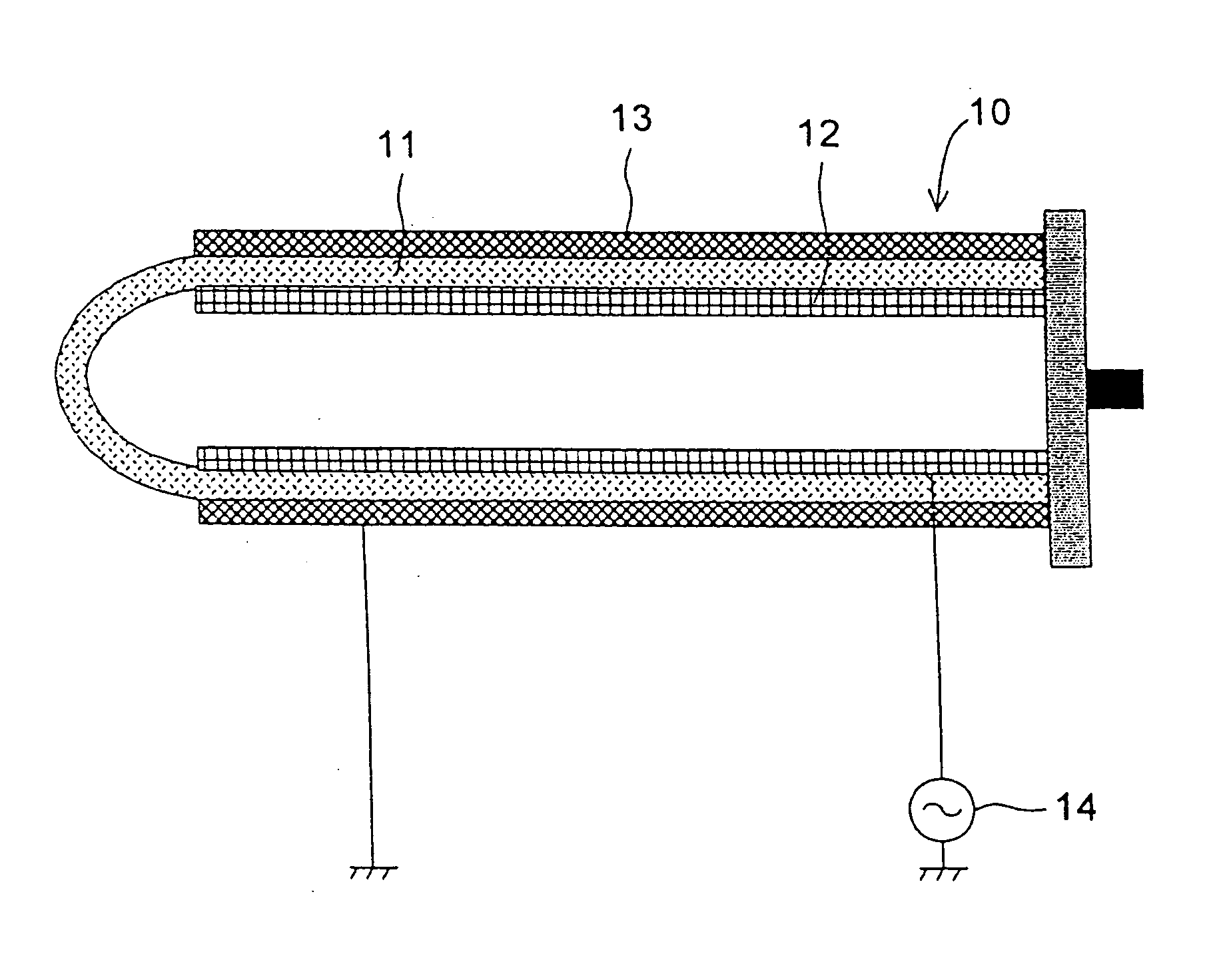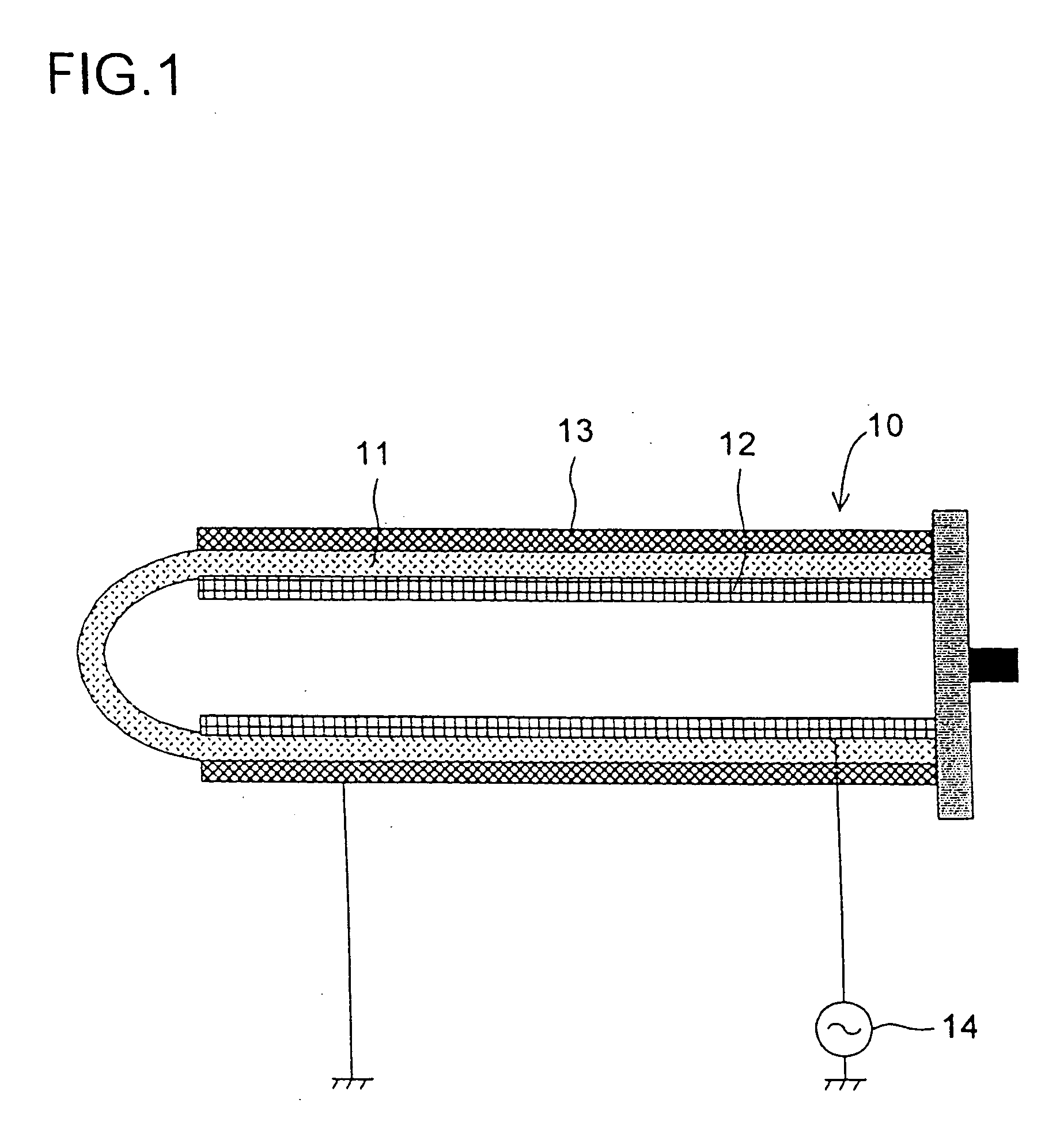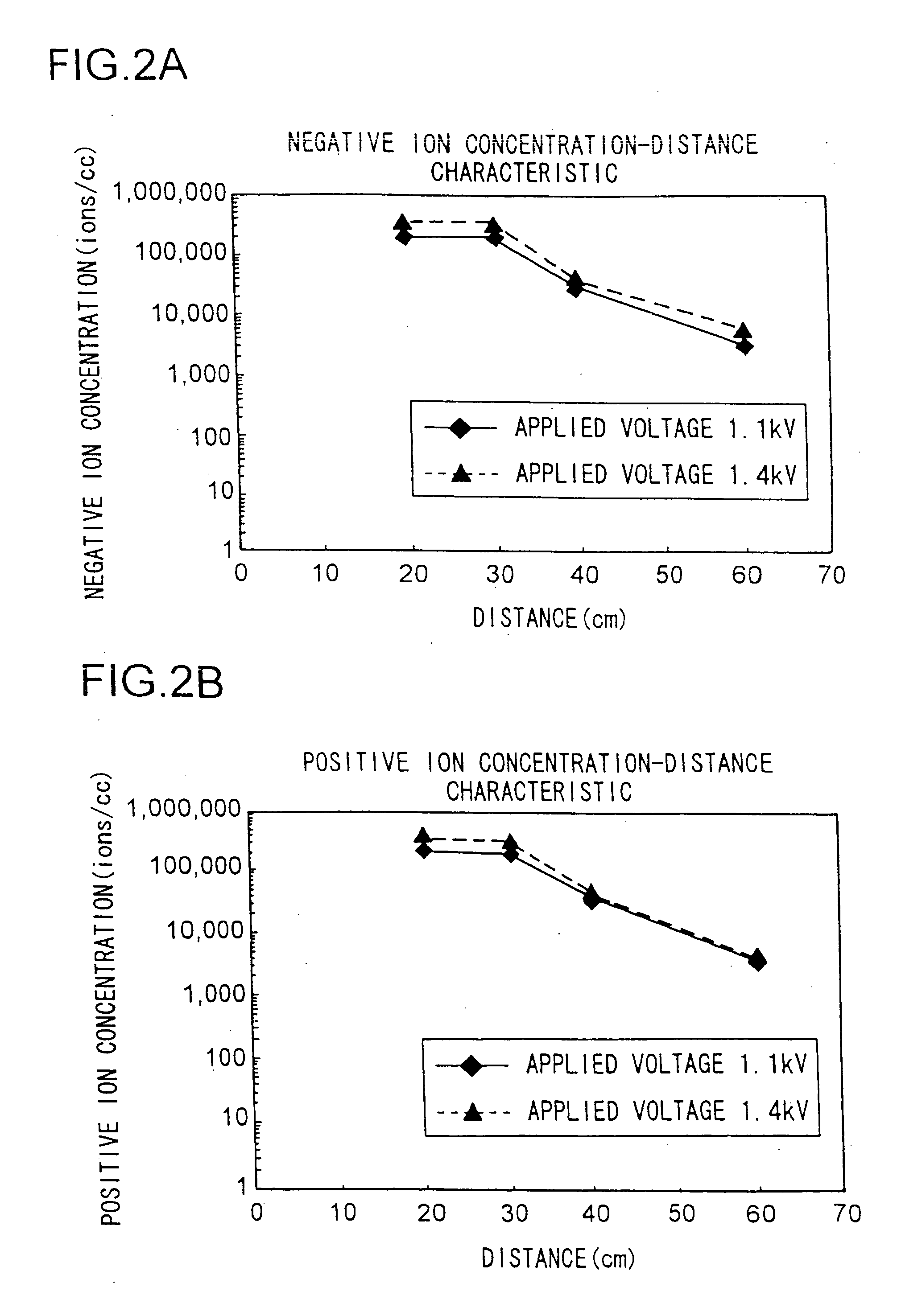Air conditioning apparatus and ion generating device for use therein
- Summary
- Abstract
- Description
- Claims
- Application Information
AI Technical Summary
Benefits of technology
Problems solved by technology
Method used
Image
Examples
second embodiment
[0208] As in the second embodiment, when a high alternating-current voltage is applied between the inner and outer electrodes 62 and 63, plasma discharge occurs, generating positive ions consisting mainly of H+(H2O)n when the applied voltage is positive and negative ions consisting mainly of O2−(H2O)m when the applied voltage is negative.
[0209] As FIGS. 7 and 8 show, on the inner surface of the electrode housing portion 55a of the front cover 55, and also on the inner surface of the electrode cover 58, three ribs 68 (an element support portion) are formed integrally therewith at each end. The ribs 68 are composed of R portions 68a and elevated portions 68b that are made higher than the R portions 68a (see FIG. 5). Of the three ribs 68, the R portions 68a make contact with the peripheral surface of the cap 64 or 65, and therefore the rib at the center is made lower than the ribs on both sides.
[0210] The elevated portions 68b keep the ion generating element 54 in position in the late...
sixth embodiment
[0272]FIG. 25 shows a block diagram of the control system of the air conditioner of the To the input side of a controller 190 are connected a power switch 191 with which the operation of the air conditioner is turned on / off and a commercial power source 192 from which electric power is supplied to the controller 190. On the other hand, to the output side of the controller 190 are connected a compressor 142 that constitutes a key element for a refrigerating cycle of the air conditioner, an indoor fan 126, and, through the high frequency circuit 14, the inner electrode 12 of the ion generating device 10.
[0273] Thus, in the air conditioner of the sixth embodiment, in concert with the operation of the air conditioner, i.e. the operation of the compressor 142 and the indoor fan 126, the controller 190 can activate the high frequency circuit 14 to apply an alternating-current voltage to the inner electrode 12 of the ion generating device 10.
[0274] Thus, for example, when the air conditi...
tenth embodiment
[0288] the air conditioning apparatus of the invention will be described below with reference to FIGS. 29 to 31. FIG. 29 shows the indoor unit 101 f of this air conditioner with the front panel 103 closed, and FIG. 30 shows the indoor unit 101f with the front panel 103 opened. FIG. 31 is a block diagram of the control system of the air conditioner.
[0289] In the tenth embodiment, an ion outlet is provided separately from the air outlet 104 of the indoor unit 101f. In the figures, reference numeral 200 represents the ion outlet through which the ions generated by the ion generating device 10 is blown out, and behind this ion outlet 200 is arranged a blowing fan 201 (see FIG. 31) that blows out the ions generated by the ion generating device 10 that is provided separately from the air conditioning portion (composed of the compressor 142, the indoor fan 126, and other components).
[0290] The liquid crystal display device 106 displays the operation status of the ion generating device 10 ...
PUM
 Login to View More
Login to View More Abstract
Description
Claims
Application Information
 Login to View More
Login to View More - R&D
- Intellectual Property
- Life Sciences
- Materials
- Tech Scout
- Unparalleled Data Quality
- Higher Quality Content
- 60% Fewer Hallucinations
Browse by: Latest US Patents, China's latest patents, Technical Efficacy Thesaurus, Application Domain, Technology Topic, Popular Technical Reports.
© 2025 PatSnap. All rights reserved.Legal|Privacy policy|Modern Slavery Act Transparency Statement|Sitemap|About US| Contact US: help@patsnap.com



